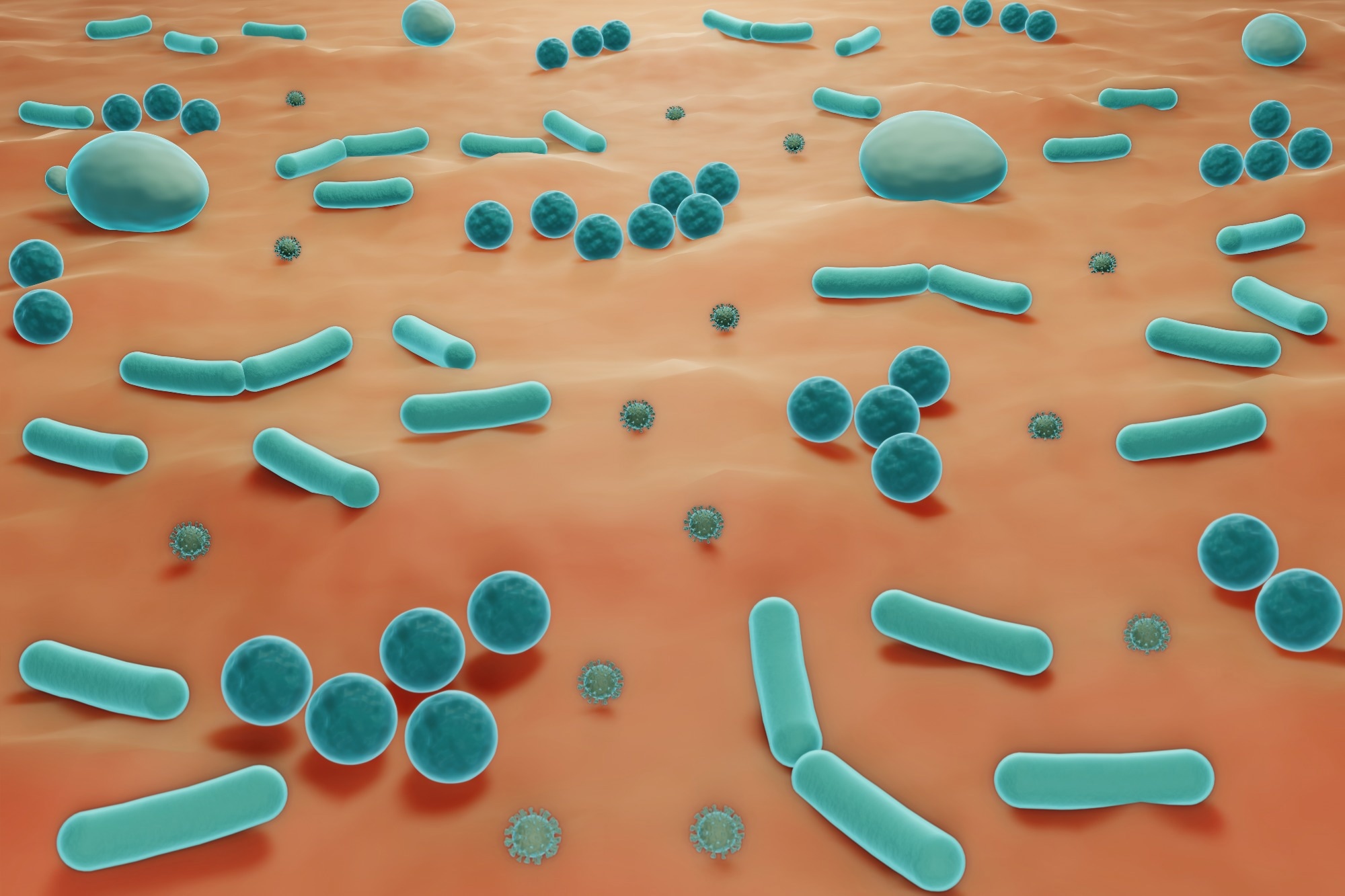A recent study published in the Environmental Research Journal examined how the skin microbiome contributes to protection from solar damage when exposed to sun radiation daily. Study: Skin microbiome bacteria enriched following long sun exposure can reduce oxidative damage: a 5-month preliminary study of ten lifeguards. Image Credit: ART-ur/Shutterstock.com
Study: Skin microbiome bacteria enriched following long sun exposure can reduce oxidative damage: a 5-month preliminary study of ten lifeguards. Image Credit: ART-ur/Shutterstock.com
Background
The skin microbiome helps to protect the skin against infection, acting as a natural and effective barrier against pathogens present in the environment.
Exposure to solar radiation could increase the risk of skin cancer and accelerate skin aging. A new paper explores the role of skin bacteria in protection against solar damage in lifeguards, who are typically exposed to the sun for long periods of time over the daytime.
Introduction
The human microbiome is essential in preserving the health of the human organism through mutualistic interactions between the host and the microbes.
The skin microbiome (SMB) prevents overgrowth by pathogenic species, both by competing for suitable spaces and by producing inhibitory antimicrobial peptides (AMP).
However, the overall relationship of the microbiome with the host is nuanced, as certain strains even of the same microbe, may have beneficial or adverse effects on the skin, given the right mix of circumstances, thus impacting its barrier function.
Exposure to ultraviolet radiation (UVR) is deleterious to the skin and to its resident microbes. UVR causes deoxyribonucleic acid (DNA) damage, and over the long term, this may cause cancerous changes that could be fatal to the host.
The production of reactive oxygen species (ROS) is one important indirect method of UVR-induced skin damage.
Natural defenses against such damage include skin pigmentation, DNA repair pathways, and antioxidant molecules, to which may be added the action of certain components of the SMB.
For instance, cyanobacteria produce scytonemin, a bioactive pigment that can block UVR in prokaryotes without breaking down in the presence of sunlight.
It is known that the SMB does not change substantially when exposed to stressors. The current paper looked at changes in certain species of low abundance but with a high degree of influence on the host-microbiome interaction in response to UVR exposure.
If these are enriched after exposure to sunlight, it would indicate that they are stable against UVR and that they could potentially protect the skin against UVR-linked damage.
What did the study show?
Skin swabs were taken from ten lifeguards before and after the summer season. While both showed a similar abundance of skin microbes, certain less abundant species were found to show significant changes. New taxa were found to appear in the SMB at the end of the season, compared to the baseline.
The researchers found that certain species of bacteria were enriched following seasonal exposure to the sun in ten lifeguards examined via skin samples before and after the summer set in.
These included Sphingomonas and Erythrobacteraceae, two species that may be able to reduce the adverse impact of UV radiation. The former showed high levels of resistance to damage caused by UVR at 254 nm and 312 nm, with exposures ranging from 8-20 mJ/sq. cm. and 122-366 mJ/sq. cm, respectively.
While E. coli could not resist more than a minimal amount of radiation, Sphingomonas mucosissima was capable of tolerating all radiation doses, indicating that it is highly resistant to UV irradiation.”
This occurs via their production of protective chemicals that limit the production of human keratinocytes. Such compounds include ubiquinone 10, glycosphingolipids (GSLs), and a yellow carotenoid pigment from Sphingomonas, as well as glucagon-like peptides (GLPs) and carotenoids from Erythrobacteraceae. Carotenoids are potent antioxidants, while GSLs help preserve skin barrier integrity.
The increase in abundance of these two taxa was seen in over half of the swabs, indicating their ability to withstand UVR.
This characteristic may be shared by non-beneficial skin bacteria as well, of course, while changes in skin hydration may explain other aspects of such a change.
In vitro results showed that exposure to ultraviolet B (UVB) radiation caused a three-fold rise in ROS levels, which was mitigated by adding antioxidants like N-acetylcysteine.
A similar effect, resulting in the reduction of ROS levels by a quarter, was also observed when the cells were added to a solution containing the lysate or supernatant from a Sphingomonas culture but not that from an E. coli culture.
The lysate was powerful in its protective effects at low concentrations, suggesting that this bacterium, as well as others of low abundance, may be important in preventing UVR-induced skin damage.
The study thus showed that bacterial species able to protect the skin against the adverse effects of solar UVR increase following long periods of solar exposure, despite the lack of any significant change in the overall composition of the SMB.
This corroborates earlier research showing that the SMB remains stable with respect to the most abundant species for two years, but the less abundant species change over time.
Again, prior studies have shown that Sphingomonas inhibits cellular senescence and promotes skin restructuring.
What are the implications?
These results suggest that members of the skin microbiome can enhance protection from solar radiation damage and contribute to human health.”
Further larger studies involving other geographical and climatic settings, as well as other groups of people, might help identify those bacteria and products that are potently protective against solar radiation.